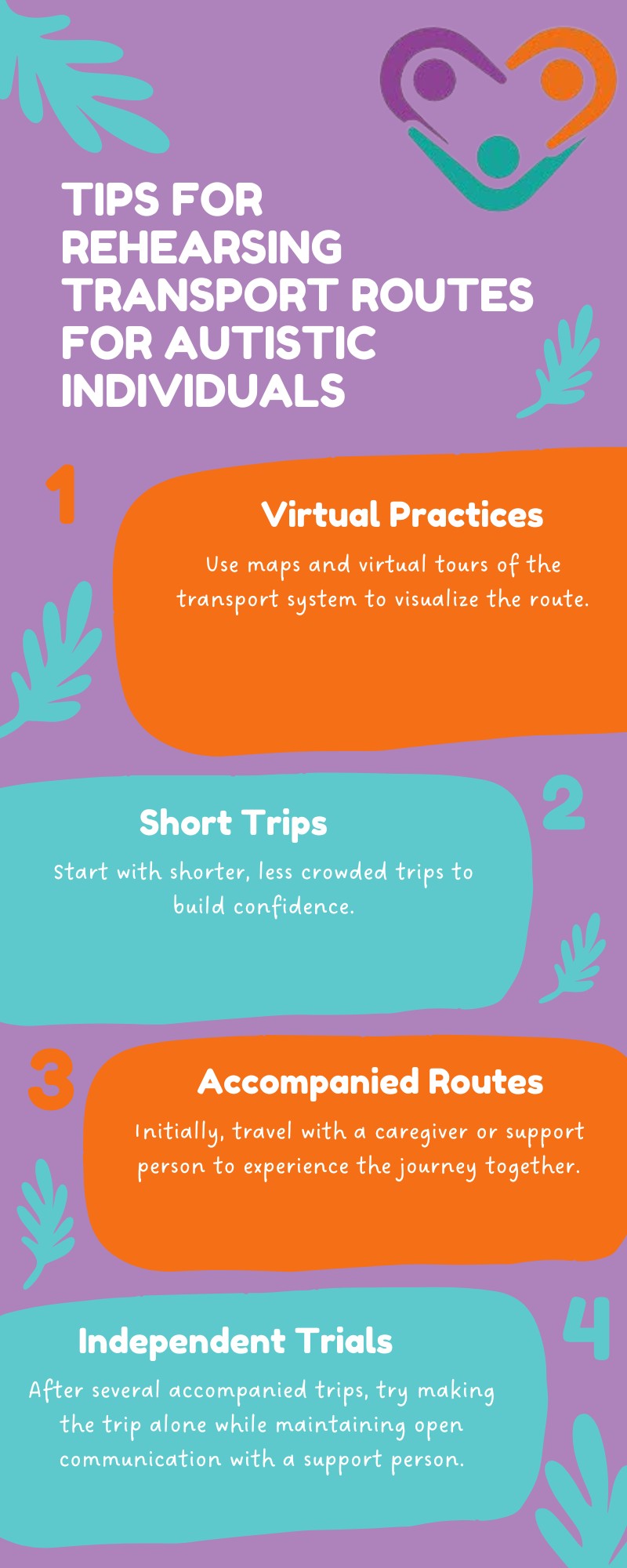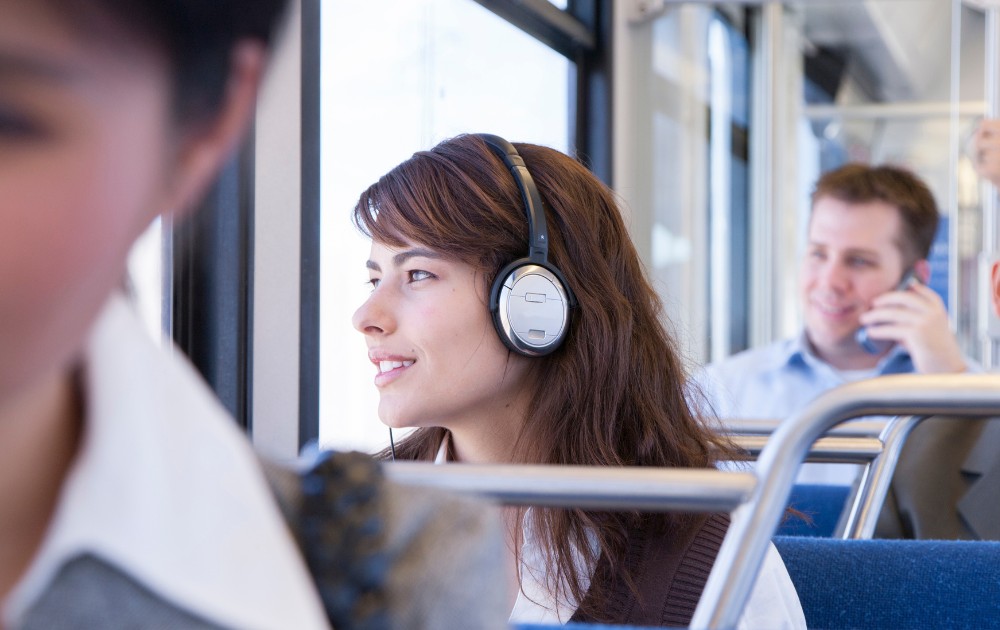Navigating public transport can feel like a daily challenge, even for those who are used to it. For autistic adults, the experience can come with extra hurdles. From sensory overload to difficulty with unexpected changes, public transport systems often present a unique set of obstacles.
Yet, many autistic individuals have found ways to manage and even thrive while using buses, trains, and subways. Understanding how they navigate these spaces can shed light on the strategies, supports, and solutions that make travel more manageable.
How Do Autistic Adults Navigate Public Transport?
Navigating public transport can present unique challenges for autistic adults, particularly those with high-functioning autism, due to sensory sensitivities, difficulties with social interactions, and the need for structure and predictability.
For many, the noise, crowded spaces, and unexpected changes in schedules can be overwhelming. Autistic adults may prefer quieter times for travel, such as early mornings or late evenings, when public transport is less crowded. Using noise-canceling headphones, sunglasses, or other sensory tools can help manage sensory overload.
Additionally, they may rely on routines and planning to reduce anxiety, often using mobile apps or physical schedules to track routes and timetables with precision.
Support systems like companions, visual aids, or personalized travel training programs can also play a significant role in helping autistic adults navigate public transport. Some may use social stories or practice scenarios to build confidence and coping strategies before traveling alone.
In cases where public transport presents a severe barrier, alternative options like ride-sharing services, tailored transport programs, or accessibility-focused transportation networks can offer solutions.
Overall, the key to successful travel lies in understanding personal needs and planning around them to ensure comfort and independence.
Preparing for the Journey
Navigating public transport can be a daunting task for autistic adults. Proper preparation can ease the journey and make the experience more manageable. Key components of preparation include using visual supports and social stories and rehearsing the route.
Visual Supports and Social Stories
Visual supports are essential tools that can help individuals with autism understand and anticipate what will happen during their journey. These supports can include pictures, diagrams, or illustrated schedules that depict each step of the trip. Utilizing visual aids can reduce anxiety and increase familiarity with the process.
Social stories are another effective strategy. These are short descriptions of a particular situation, event, or activity, which include specific information about what to expect. Social stories can provide a framework for understanding and navigating public transport.
They are customized to the individual’s needs and can outline the sequence of events, rules of behavior, and potential scenarios.
Rehearsing the Route
Practicing the route before the actual journey can significantly help autistic adults become comfortable with using public transport. Rehearsing can be done in several steps, including:

Repeatedly rehearsing the route allows autistic individuals to familiarize themselves with different aspects of the journey, such as purchasing tickets, finding the correct platform, and recognizing stops.
These preparation techniques provide a solid foundation for autistic adults, making public transport less intimidating and promoting independence in their daily lives.
Strategies for Navigating Public Transport
Navigating public transport can be challenging for autistic adults. Developing effective strategies can make the experience smoother and less stressful.
Establishing a routine is crucial for individuals with autism who may find predictability and structured activities comforting. Creating a routine for using public transit can involve several steps including:
- Using the same bus or train lines regularly can help build familiarity.
- Traveling at the same times each day can reduce uncertainty.
- Repeatedly practicing the route to and from regular destinations helps build confidence.
The benefits of a fixed routine include reduced anxiety and increased independence.
There are also travel training programs designed to help autistic adults learn how to use public transportation effectively. These programs may include individualized instruction and practical exercises tailored to the person’s needs.
These travel training programs offer structured guidance, enabling autistic adults to gain more independence and confidence. By developing routines and utilizing specialized training programs, autistic adults can better navigate public transport, making their journeys more manageable and less stressful.
Safety Measures to Keep in Mind
Ensuring personal safety is crucial for autistic adults navigating public transport. Developing effective strategies and being prepared for emergencies can help mitigate risks and promote a sense of security.
Public transportation can pose various safety challenges. Implementing certain personal safety strategies can support autistic individuals during their journey. Here are some worth considering:
- Carry Identification Cards: Having a card that provides essential information, such as name, address, emergency contacts, and any pertinent medical details.
- Travel with a companion: Whenever possible, travel with a trusted friend or family member.
- Stay Aware of Your Surroundings: Encourage them to remain vigilant about their environment to identify any potential threats or changes.
- Avoid Distractions: Limiting the use of electronic devices or headphones to stay alert.
- Know Safe Zones: Identifying safe places such as information desks or designated waiting areas.
- Utilize Safe Apps: Using smartphone apps to share real-time location with loved ones.
At the same time, being prepared for emergencies can significantly reduce stress and enhance safety. Here are some steps to ensure preparedness:
- Memorize emergency numbers
- Create an emergency plan
- Pack an emergency kit
- Know exit routes
- Practice self-calming techniques
- Inform relevant personnel
Implementing these strategies and emergency preparedness steps can significantly enhance the safety and independence of autistic adults using public transportation.
The Key Takeaway
Public transport can be a gateway to independence for autistic adults, but it often comes with unique challenges. With understanding, preparation, and support, these challenges can become manageable, opening up opportunities to explore the world more confidently.
Fostering empathy and creating accessible systems can help society make public transport a space where everyone feels welcome and empowered. At Golden Care Therapy, we’re dedicated to providing top-quality ABA services in Indiana, New Jersey, New York, Georgia, and Florida.
Our compassionate team tailors therapy to meet the unique needs of every individual and ensure meaningful progress and lasting results. Contact us today to learn how we can support you or your loved one on their journey toward success.
Sources:
- https://www.aaidd.org/docs/default-source/career-center/transportation-and-community-participation-among-autistic-adults.pdf?sfvrsn=6b953e21_2
- https://www.autismcrc.com.au/sites/default/files/reports/3-041_Young-autistic-adults-on-public-transport_Report_2020.pdf
- https://www.sciencedirect.com/org/science/article/pii/S0144164724000187



